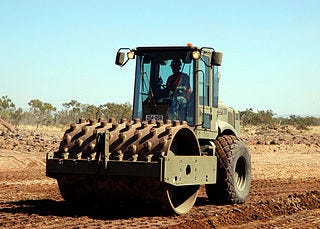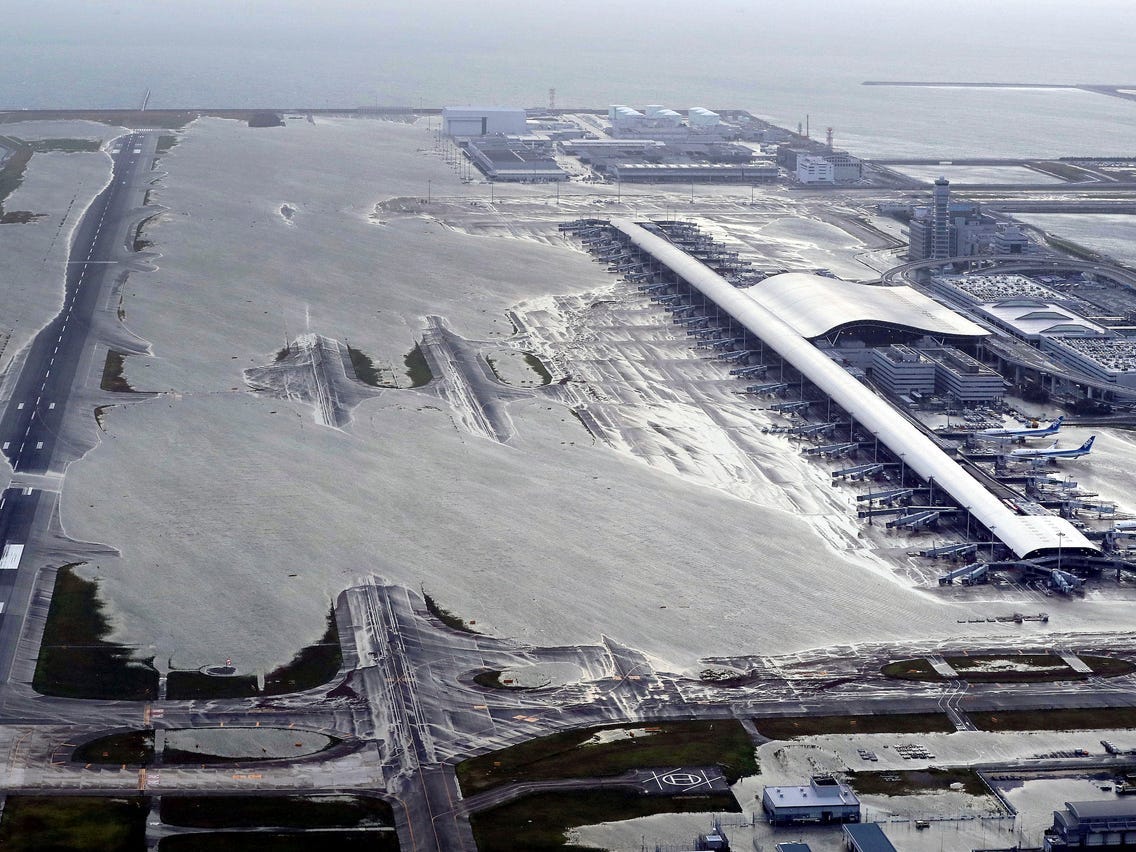Building on reclaimed land
How soil settlement may affect our ability to capitalize on reclaimed land.
This is the Millennium Tower in San Francisco. Since its opening in 2009, the tower has sunk nearly 18 inches, and tilted 28 inches towards the northwest corner. With construction costs topping 350 million dollars, the Millennium tower was slated to be definitive among the SF skyline. However, multiple lawsuits and the looming threat of being declared “unsafe for occupation” continue to harry the project to the present day. A plan to steady the building (not completely, but eliminate ~50% of the tilt over 10 years) is underway, but as of August 2021, the 100 million dollar effort to connect the building to the underlying bedrock via a series of piles was put on hold upon discovery of additional sinking occurring despite the installation of 39/52 piles.
The sinking has broken windows, unleveled floors, and created cracking throughout much of the visible foundation. The investigation as to who is to blame is still underway in the case of the Millennium Tower, but the general consensus as to the cause of the tilting is the subsidence of poor quality subgrade material underneath the building site. When they reclaimed this area of the bay, they did so with little thought as to the strength of the soil, often using mud, trash, and rubble as far back in history as the 1840s. The Millennium Tower, and much of San Francisco’s downtown is built on fill material and former marshlands.

The material used to fill these areas is underlaid by the mud and soft clay of the bay and below that, the loose and sandy deposits known as “the Colma Formation”. These weak underlying soils make it hard to remove water from under the site, and put the area at high risk to experience liquefaction (referenced in a previous post). But why does it matter how strong the soil under a building is? Shouldn’t the foundation be enough to support it? Well, if you’ve ever taken the time to watch a construction site in the early stages of a project, you might have seen something that confused you. It often appears that construction workers are digging holes, only to come back later and refill the same hole! No wonder construction takes so long!

Although the idea that they are digging holes only to fill them may fit the popular archetype of the “lazy construction worker” this is not the case. These workers are actually performing some of the most important work that will be done in the course of the project. In this post, I’ll explain soil compaction, why it is so important, and how it helps engineers and builders combat a phenomenon called settlement.
In a previous post, I explained that soil is principally made up of three components, solids, liquids (usually water), and gas (usually air), and how the three-phase diagram relates to our model of soil.
This matrix of materials has different properties depending on the proportions between these three components. For an intuitive example, imagine stepping into a mud pile compared to stepping onto regular ground like a garden bed. You would expect the muddy puddle (where the volume of water is large compared to air and solids) to be much less able to support your weight than a soil with a balanced makeup. A soil’s ability to support the loads applied to it before experiencing shear failure is called bearing capacity. One way to increase a soil’s bearing capacity is to compact it, reducing the amount of volume taken up by air, which in turn makes it harder for the soil particles to slip past one another.
But just how much should the soil be compacted? This is a very important question, geotechnical engineers developed a testing method known as the “Proctor Test” to measure this. The proctor test allows us to measure the maximum dry unit weight of the soil, and determine at what moisture content this occurs. This is called the optimum moisture content. Essentially, water helps the soil particles slide past one another during compaction, so they can be more densely packed. After a certain point however, this effect is outweighed by the water taking up too much space between the particles, and beginning to displace them, lowering the total density. You can see this in the curve below.
At the Millennium tower, it’s thought that dewatering from construction in the surrounding areas may have led to a loosening of the already sub-par material beneath the foundation, causing differential settlement across the site. But it’s not just the Millennium tower. Problems with settlement have long plagued projects built on reclaimed land.
Take Kansai airport in Osaka Bay, Japan, which has sunk a whopping 38 feet since its construction in 1994, and which now regularly floods during typhoon season, due to inadequate seawalls and poor pumping capacity.
There are similar projects being built all over the world, from plans to save the Maldives to plans to extend downtown Manhattan, and without a proper understanding of settlement and subsidence, I think it’s unlikely that dense urban environments or important infrastructure will be able to succeed there without incurring the high costs of sinking foundation piles all the way to bedrock. In some places this may not be such a big issue, but especially in areas where the bedrock is extremely deep and covered by unstable soils or in places where that bedrock is tectonically active, this could drive up foundation engineering costs. Taking these costs into account, it may not make sense to build the building on that reclaimed land, opting instead for more steady ground in a less prime location.
For these reasons, I think that we should adjust our priors and temper our expectations of land reclamation. I think that especially in the face of climate change and sea level rise, we ought to shift from the fanatic ideal of dense megastructures built on reclaimed areas of the Thames or Hudson, and towards models of climate adaptation and lower density buffer zones that have so far been successful in areas like the Netherlands, which you can read about in my recent post on the Delta and Zuiderzee works. Unless the project is planned around the added cost of building settlement resistant foundations, I worry that blasé land reclamation in the name of density will ultimately result in unrecoverable sunk costs, similar to the millennium tower. (Pun intended)
Thanks for reading!
-Connor, OfAllTrades.
Like this article? Please Subscribe!
Know someone who would? Please Share!
And if any of you readers out there are secretly crypto millionaires and would like to leave a tip, please check out https://alltrades.eth.xyz/











Practical Engineering has done a few videos about these issues. I really recommend his YT channel to anyone interested in problems like this.
Great write-up!
> it’s not just the Millennium tower. Problems with settlement have long plagued projects built on reclaimed land...There are similar projects being built all over the world...Taking these costs into account, it may not make sense to build the building on that reclaimed land, opting instead for more steady ground in a less prime location...For these reasons, I think that we should adjust our priors and temper our expectations of land reclamation...I think that especially in the face of climate change and sea level rise, we ought to shift from the fanatic ideal of dense megastructures built on reclaimed areas...
Can you be more quantitative about these broad claims? My prior is that
(1) For every construction project on reclaimed land you hear about incurring large surprise costs due to poor handling of soil settlement, there are many similar projects that handle the issue safely and profitably, i.e., the big mistakes are outliers.
(2) As the number of such projects grows, the rate of costly errors will *fall* because builders learn and share best practices.
Are there any numbers that might pull me away from this prior?